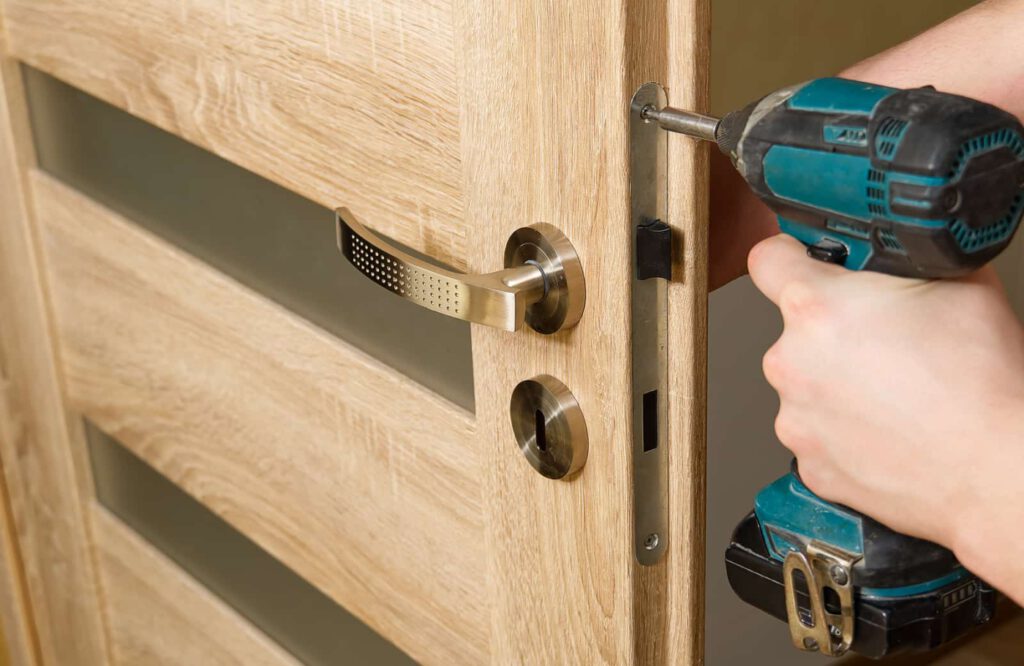A Comprehensive Guide to Door Lock Repair
When it comes to the security of our homes and properties, door locks play a crucial role. However, like any mechanical device, door locks can experience wear and tear over time, leading to various issues. In this comprehensive guide, we will delve into the world of door lock repair, covering everything you need to know to ensure your locks are functioning optimally. Whether you’re facing a sticky lock, a broken key, or a misaligned latch, we’ve got you covered with step-by-step instructions, tips, and tricks.
Common Door Lock Problems
Door locks can encounter several common issues that require repair. Some of the most frequently encountered problems include:
Sticky Locks: A sticky lock can make it frustratingly difficult to unlock or lock a door smoothly. This issue is often caused by dirt, debris, or rust within the lock mechanism.
Broken Keys: Keys are prone to breakage, especially if they are old or worn out. A broken key stuck inside a lock can be a major inconvenience, preventing access to your property.
Misaligned Latches: A misaligned latch can prevent a door from closing properly or make it challenging to engage the lock mechanism. This issue may occur due to the settling of the door or an improper installation.
Loose Door Handles: Over time, door handles can become loose, compromising the functionality and security of the lock. Tightening loose door handles is an essential maintenance task.
Repairing a Sticky Door Lock
Step 1: Assess the Situation
Before attempting any repairs, determine the cause of the sticky lock. Is it due to dirt, debris, or rust? Understanding the root cause will help you choose the appropriate repair method.
Step 2: Clean the Lock Mechanism
Using a can of compressed air, blow away any loose dirt or debris from the lock mechanism. Follow up by applying a silicone-based or graphite lubricant to the keyway and all moving parts of the lock. This lubrication will help ease the movement of the lock and delay the door lock repair.
Step 3: Test the Lock
Insert the key into the lock and test its functionality. If the lock is still sticking, you may need to disassemble the lock mechanism for a more thorough cleaning.
Step 4: Disassemble and Clean the Lock
Using a screwdriver, carefully remove the lock from the door. Disassemble the lock mechanism and clean all the individual parts with a solvent or degreaser. Once clean, reassemble the lock and reinstall it in the door.
Replacing a Broken Key
Step 1: Remove the Broken Key
Using needle-nose pliers, gently grip the broken key and slowly pull it out of the lock. Take care not to damage the lock mechanism during this process.
Step 2: Evaluate the Key Damage
Inspect the key to determine if it is salvageable. If the key is severely damaged or has snapped in multiple places, it is advisable to have a new key made by a professional locksmith.
Step 3: Duplicate the Key
If the key is salvageable, take it to a key duplication service or a locksmith to have a new key made. Ensure the new key is an exact replica of the original for proper functionality.
Adjusting a Misaligned Latch
Step 1: Identify the Misalignment
Close the door and examine the alignment of the latch and strike plate. If the latch bolt does not align with the hole in the strike plate, you have a misalignment issue.
Step 2: Tighten the Hinge Screws
Loose hinge screws can contribute to misaligned latches. Use a screwdriver to tighten the screws on the hinges, ensuring the door is properly aligned with the frame.
Step 3: Adjust the Strike Plate
To adjust the strike plate, loosen the screws holding it in place. Carefully move the strike plate until the latch bolt aligns with the hole. Once aligned, tighten the screws to secure the strike plate.
Maintaining Door Locks
Regular maintenance is key to prolonging the lifespan of your door locks and preventing potential issues. Follow these maintenance tips to keep your locks in top shape:
Clean Regularly: Remove any accumulated dirt or debris from the lock mechanism using a soft brush. Avoid using harsh chemicals that may damage the lock.
Lubricate Moving Parts: Apply a small amount of graphite or silicone-based lubricant to the lock’s keyway and moving parts to ensure smooth operation.
Inspect and Tighten: Regularly inspect your locks for loose screws or other signs of wear. Tighten any loose screws to maintain the lock’s stability.

